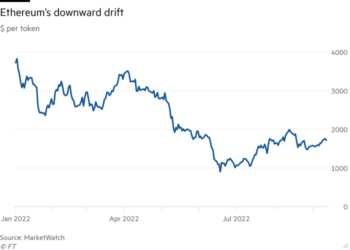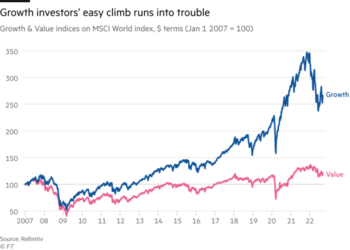The writer, author of ‘The Technology Trap’, is the Citi Fellow at the Oxford Martin School, Oxford university
We have often been told that the great inventions of the past cannot be repeated, and that we have already eaten all the low-hanging fruit. And yet, time and time again, scientific progress has allowed us to pluck the fatter, juicier crop from higher branches.
The trouble is that while research inputs have been rising sharply, research productivity is dropping even faster. It now takes 18 times the number of researchers to achieve Moore’s law — that is, the doubling of computer chip power about every two years — than in the early 1970s.
In that period of turmoil, inflation soared just as the productivity boom of the mass production era petered out, producing the mix of rising prices and slow growth known as stagflation. While inflation came back down in the 1980s, the productivity drought has continued, interrupted by a brief revival in the late 1990s.
But the 2020s might finally see the end of the Great Stagnation — the idea that the west’s economies are marooned on a technological plateau. One reason for optimism is the boost to science and innovation of digital methods for remote collaboration.
That the returns on old industries and established technologies eventually ebb should be no surprise. But studies show it is happening across the entire US economy. On current trends, aggregate research productivity is halved every 13 years. Put simply, we are getting less innovation bang for the R&D buck.
This rhymes with my own work with Giorgio Presidente and Chinchih Chen of the Oxford Martin School. Our analysis of what 10mn research teams published between 1961 and 2020 shows that a growing percentage of discoveries are what we might call brief squeals rather than the blockbuster narratives we need to create new avenues for progress.
For example, the early breakthroughs in mRNA research created an entirely new field, making possible the most effective vaccines against Covid-19. But subsequently having more and more researchers focused on improving vaccine efficiency, from say 98 per cent to 100 per cent, inevitably runs into diminishing returns.
The standard response — more spending on R&D — won’t solve the productivity problem. The urgent task is to improve the process that converts research work into scientific outputs.
Our estimates suggest that the rise of remote collaboration accounted, until recently, for much of the demise of breakthrough innovation. When on-site teams have to work apart, they are much less likely to make breakthroughs. The case of mRNA again illustrates the importance of face-to-face collaboration: Katalin Kariko and Drew Weissman, who demonstrated the promise of the technology, met by chance at a Xerox machine.
Nonetheless, with the advent of the web and then email in the 1990s, remote projects became irresistible. In a flash, the best talent from across the world could collaborate seamlessly, or so it seemed. This promise failed to deliver until the 2010s, which, with the proliferation of remote working tools, marked a turning point: distant teams then gained the competitive edge in disruptive science.
The virtual world remains a very imperfect substitute for face-to-face. As a recent experiment published in Nature demonstrates, videoconferencing narrows people’s cognitive focus, which hampers idea generation. But today’s digital technologies are sufficiently good for researchers to be able to compensate for the drawbacks, making use of complementary skills and resources around the world.
To be clear, it is not that face-to-face no longer matters. Rather, by connecting real-world networks, such as Silicon Valley and Tel Aviv, or Oxford and Zhongguancun, remote collaboration increases the innovating potential of what Michael Muthukrishna and Joseph Henrich have called the “collective brain”.
Economists, including Erik Brynjolfsson, have noted that productivity growth follows a J-curve: complementary investments and organisational changes are central to realising the benefits of new technologies — and their impact is often underestimated to begin with. The historical examples of electricity and steam illustrate the point vividly.
I agree. Harnessing the communications revolution for remote collaboration has also required complementary investments — some, including patenting in remote work technologies, have been accelerated during the pandemic. It can spark a revival of breakthrough science, faster productivity growth and, finally, the chance to escape stagnation.











